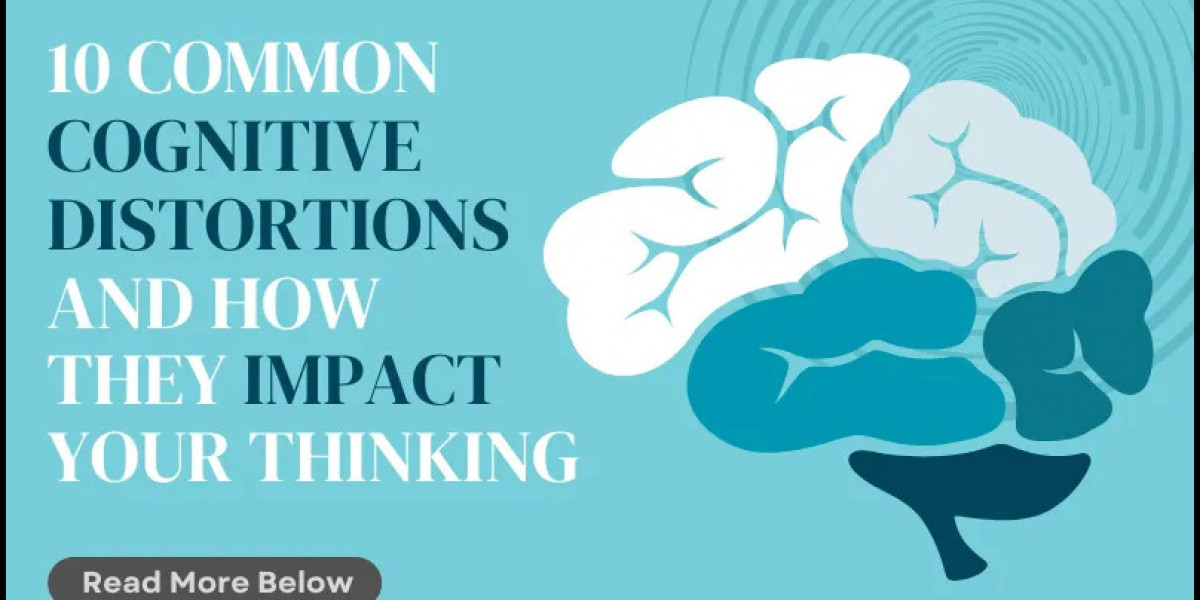10 Common Cognitive Distortions and How They Impact Your Thinking
10 Common Cognitive Distortions and How They Impact Your Thinking
Our minds are powerful, but they aren’t always accurate. Sometimes, we fall into patterns of irrational or biased thinking, known as cognitive distortions. These distorted thoughts can negatively impact our mood, decision-making, and overall mental health. The good news? By identifying and challenging them, we can improve our emotional well-being and gain a clearer perspective.
We’ll explore 10 common cognitive distortions, how they show up in everyday life, and practical tips to overcome them.
? 1. All-or-Nothing Thinking (Black-and-White Thinking)
This distortion involves viewing situations in extremes—things are either perfect or a total failure.
Example: "If I don’t get this promotion, I’m a complete loser."
Impact: This mindset makes it difficult to recognize partial successes or progress, leading to feelings of inadequacy.
✅ Tip: Embrace the gray area. Recognize that most situations exist on a spectrum rather than as absolutes.
? 2. Overgeneralization
When you overgeneralize, you take a single negative event and believe it will happen repeatedly.
Example: "I didn’t do well in this presentation, so I’m terrible at public speaking."
Impact: This distortion fuels self-doubt and reinforces negative self-perceptions.
✅ Tip: When you catch yourself saying "always" or "never," challenge it. Remind yourself that one instance doesn’t define the whole picture.
⚡ 3. Mental Filtering
This occurs when you focus exclusively on the negative aspects of a situation and ignore the positive.
Example: You receive positive feedback from your boss but obsess over one minor criticism.
Impact: This can lead to feelings of dissatisfaction, even when things are going well.
✅ Tip: Actively balance your perspective by listing both positives and negatives.
?️ 4. Catastrophizing
Catastrophizing involves assuming the worst possible outcome will occur, even when it’s unlikely.
Example: "If I miss this deadline, I’ll lose my job and never recover financially."
Impact: This distortion increases anxiety and fear, making problems feel much larger than they are.
✅ Tip: Ask yourself, "What’s the most likely outcome?" to ground yourself in reality.
? 5. Personalization
This is when you blame yourself for events beyond your control or assume you’re the cause of negative outcomes.
Example: "My friend seemed upset today—it must be because of something I said."
Impact: It can lead to unnecessary guilt and self-blame.
✅ Tip: Consider alternative explanations. People’s moods and actions are often influenced by factors unrelated to you.
⚖️ 6. Jumping to Conclusions
You make negative assumptions without sufficient evidence. This distortion often appears as mind reading (assuming you know what others are thinking) or fortune-telling (predicting the future inaccurately).
Example: "She didn’t text back right away—she must be mad at me."
Impact: It fuels unnecessary worry and misunderstanding.
✅ Tip: Ask yourself, "Do I have concrete evidence for this assumption?"
? 7. Should Statements
These are rigid, unrealistic rules you impose on yourself or others, often involving words like should, must, or ought to.
Example: "I should always be productive. If I relax, I’m being lazy."
Impact: This leads to guilt and self-criticism.
✅ Tip: Replace "should" with more flexible language, like "I’d prefer" or "It would be helpful if..."
? 8. Emotional Reasoning
Emotional reasoning involves interpreting reality based on your feelings rather than facts.
Example: "I feel unworthy, so I must be unworthy."
Impact: This distortion can keep you stuck in negative thought cycles.
✅ Tip: Separate feelings from facts. Remind yourself that emotions are not always accurate reflections of reality.
? 9. Labeling and Mislabeling
This involves assigning a sweeping, negative label to yourself or others based on a single event.
Example: "I failed this test—I’m so stupid."
Impact: Labeling yourself or others creates a fixed and overly critical self-concept.
✅ Tip: Replace labels with descriptions of behavior (e.g., "I struggled with this test" instead of "I’m a failure").
? 10. Discounting the Positive
This distortion involves dismissing positive experiences as insignificant.
Example: "Sure, they said I did a good job, but they were probably just being nice."
Impact: It prevents you from fully appreciating achievements and reinforces a negative self-image.
✅ Tip: Accept compliments and positive feedback at face value.
? How to Challenge Cognitive Distortions
Recognizing these distortions is the first step toward reshaping your thinking patterns. Here are some strategies to help:
Cognitive restructuring: Identify and reframe distorted thoughts with more balanced, realistic ones.
Journaling: Write down distorted thoughts and challenge them with evidence.
Mindfulness practices: Stay present and avoid spiraling into negative thought patterns.
Therapy: Cognitive Behavioral Therapy (CBT) is particularly effective for addressing cognitive distortions.
? Final Thoughts
Cognitive distortions are common, but they don’t have to control your thinking. By identifying and challenging these patterns, you can cultivate a healthier, more balanced mindset. Remember, it’s not about eliminating all negative thoughts—it’s about gaining perspective and being kinder to yourself.








